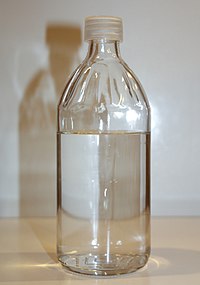
Photo from wikipedia
Abstract This study demonstrates the removal of methylene blue dye contained in wastewater through a hybrid process combining the adsorption with biodegradation process. The coconut shell biochar, prepared by pyrolysis… Click to show full abstract
Abstract This study demonstrates the removal of methylene blue dye contained in wastewater through a hybrid process combining the adsorption with biodegradation process. The coconut shell biochar, prepared by pyrolysis of coconut shell; an economical and agricultural waste, was utilized as adsorbent. The biochar of coconut shell obtained from pyrolysis was used as an adsorbent for adsorption process. Simultaneously, bacterial species was successfully isolated from textile waste leachate, which was identified as Alcaligenes species. Adsorption process parameter such as adsorbent dosage (0.5 g/L) and pH (10) were optimized for hybrid process. The continuous operation was performed in hybrid bioreactor up to 40days. The performance of hybrid process was studied in respect to COD loading and with the percentage removal efficiency of methylene blue. The maximum percentage removal of methylene blue by the hybrid process was 88.01% at loading rate 105.52 mg/L day for methylene blue removal. The residual analysis was performed by FTIR and GC–MS to verify the degradation of methylene blue.
Journal Title: Journal of environmental chemical engineering
Year Published: 2019
Link to full text (if available)
Share on Social Media: Sign Up to like & get
recommendations!